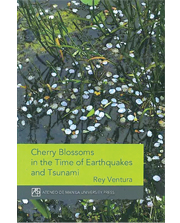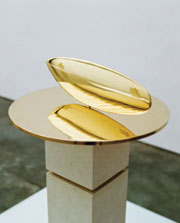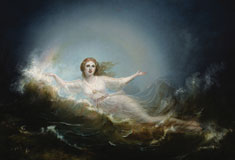Plain Talk
TOKYO NOTICE BOARD APRIL 12. 2024Brown sugar from Okinawa by Olivia
They say that sugar is “the white death” or “the white poison” because it has no nutritional value and robs our body of essential minerals and vitamins; makes our muscles weak, and makes us look old. Regular brown sugar is made by adding molasses back to refined white sugar. They say it may not spike blood sugar in healthy adults and contains some vitamins and minerals, but it is not that good for you.
Artificial sweeteners like スクラロース or アセスルファムk are not better at all, because they have dozens of side effects. One of them is that they kill the “good bacteria” in your gut, and another is that they are 200 to 600 times sweeter than sugar, making you (your brain, to be precise) crave more and more sweetness.
Brown sugar from Okinawa (黒糖, which literally means “black sugar”), on the other hand, is made using a slow cooking technique by processing sugar cane juice. That’s why it is high in calcium, potassium, and iron. The purported benefits of Okinawa brown sugar are: prevents tooth decay, helps with anemia, improves cholesterol, and alleviates stress. Pure Okinawa brown sugar (made from sugarcane only) is significantly more expensive than other kinds of brown sugar, but I say to myself: “It’s a health food!” and buy it anyway. Then I always use its nutritional information as an excuse to eat several pieces of it with my cup of coffee.
Sugarcane is the main crop in Okinawa, but it is produced only in some places. The fields of sugarcane are a popular scenery in Okinawa. If you take a tour, you can taste raw Japanese sugarcane straight from the farmlands and see how brown sugar is manufactured, or even try making it yourself.
砂糖は栄養価がなく、体に必要なミネラルやビタミンを奪い、筋肉を弱らせ、老け顔にするので、「白い死」あるいは「白い毒」だと言われる。通常の黒砂糖は、精製された白砂糖に糖蜜を加えて作られる。健康な成人であれば血糖値を急上昇させることはなく、ビタミンやミネラルも含まれているそうだが、体にはあまり良くない。
スクラロースやアールセスファムkのような人工甘味料は、数十の副作用があるため、身体に良くない。そのひとつは、腸内の「善玉菌」を殺してしまうことであり、もうひとつは、砂糖の200倍から600倍も甘いため、あなた(正確にはあなたの脳)はますます甘さを欲するようになる。
一方、沖縄の黒糖は、サトウキビの搾り汁をじっくりと煮詰める製法で作られている。そのため、カルシウム、カリウム、鉄分が多く含まれている。沖縄黒糖の効能は、虫歯予防、貧血改善、コレステロール改善、ストレス緩和などと言われている。純粋な沖縄黒糖(サトウキビのみから作られる)は、他の種類の黒糖よりもかなり高価だが、私は自分に言い聞かせる: 「健康食品だ!」と自分に言い聞かせて買う。そして、栄養成分を言い訳に、コーヒーと一緒に何個も食べる。
サトウキビは沖縄の主要作物だが、生産されているのは一部の地域だけだ。サトウキビ畑は沖縄で人気の風景だ。ツアーに参加すれば、農地から直送された生のサトウキビを試食したり、黒糖の製造工程を見学したり、自分で作ってみることもできる。
Plain Talk
TOKYO NOTICE BOARD TNB Throwback: JULY 10. 2015Soy Sauce, From Bean to Bottle by Elizabeth Morris
In kitchens around the world, you find soy sauce, or shoyu, the ubiquitous savory brown sauce that imparts salty, smoky and sharp tones to everything from soup to pasta to roast and baked meats.
The label tells you that it is made from wheat, soy beans, water and a generous amount of salt. But what does it take to make this versatile condiment? My friend and business owner, Takashi, is the scion of a soy sauce brewery in Chiba Prefecture. He invited my friends and I to make soy sauce from scratch in a process that was laborious and insightful.
First, Takashi explained to us that he had prepared the mash ahead of time, a process that takes a lot of precision and patience. To my surpise, an equal amount of boiled soy beans and roasted and crushed wheat kernels are mixed together with koji, the magical mold that takes some time to inoculate the mash, called moromi.
Takashi prepared for our workshop plastic PET bottles, bags of the fragrant moromi and sea salt from the nearby coast. Like any good brewing, water source is important. We drew water from the soy sauce factory's own spring.
It takes a lot of energy to mix by hand the salt and spring water until the brine looks clear. Then, it's another laborious mixing of the moromi and brine. We capped our PET bottle soy sauce brewing, enjoyed a barbeque and then took our PET bottles home.
At home, daily shaking of the PET bottle in the first few weeks, and then periodic shaking to mix have resulted in a rich brown coloured thick paste. Takashi cautioned me not to screw the cap on the bottle tightly, as gases from the fermentation process can make the bottle explode, with gooey, messy results.
My batch of soy sauce is now seven months old, and I am bracing myself for the shibori part of the process in another month. In factories, the mash is pressed to extract the soy sauce, but I will put my small batch in a muslin bag hanging above a pan to let it drip out.
Is it edible? Takashi cautioned me that wild yeasts and organisms might live in it. Soy sauce is often pasteurized, but some people like nama, or raw soy sauce. I think I'll cook mine and taste test it against store -bought varieties. So far, when I catch a whiff of it, it smells sharp and something like whisky.
世界じゅう、いたるところのキッチンに醤油がある。どこでも見かける塩気のきいた茶色のソースは、スープからパスタ、ロースト/ベークドミートまで何にでも塩味、香味を加えおいしさを引き立たせる。
ラベルよれば、成分は小麦、大豆、水、塩でだと書かれているが、この万能調味料の基になっているのは何だろう。友人であり商売をいくつかしているタカシは千葉県にある醤油醸造蔵の御曹司である。タカシは私と友人たちを蔵内部に招き入れてくれ製造工程を見せてくれた。
最初に、タカシは 原料行程の仕込みにはかなりの時間を要すると教えてくれた。驚いた事に大豆を蒸煮し、小麦を焙煎し割砕してから麹を加え混ぜるまで同様の時間をかける。こうして発酵してできたものがもろみである。
タカシは講習会で私たちがもろみや海塩を入れるPETボトルやビニール袋を用意してくれた。醸造を成功させるには、水は大切だ。醤油蔵設置の井戸から水を汲んだ。
塩と井戸水を手で一生懸命こね塩水を透明にした。さらに骨の折れる作業が待っていて塩水にもろみを混ぜた。私たちはPETボトルに醸造する液体を詰めてからバーベキューを楽しんだ。そしてPETボトルを家に持って帰った。
家では、毎日PETボトルを降って数週間を過ごした。振って混ぜて過ごすうちに中身が茶色のペースト状になっていった。タカシはPETボトルのふたをきつく締めつけないようにとアドバイスしてくれた。発酵作用でガスが発生し、ボトルが爆発し、あたりにベタベタして悲惨な状況になるからだと教えてくれた。
私の醤油は7ヶ月になる。あと一ヶ月で絞り行程へと移る。蔵では、もろみを圧搾して醤油を取り出すが、私は自分のもろみをモスリンの袋に入れてつるし、ドリップする醤油を鍋で受けようと思う。
食用に適するかって?タカシは生の酵母菌や微生物が含まれているかもしれないから気をつけるようにと言ってくれた。醤油は低温殺菌されるが、生醤油が好きな人もいる。私は自分が醸造した醤油を煮立たせてから、店で売られているさまざまな醤油と比べて味覚テストしようと思う。今のところ、漂ってくる香りは、段々シャープになってきて、なんだかウィスキーのようだ。
Unfinished business
TOKYO NOTICE BOARD MAY 17. 2019Farewell to a Japan Jazz Icon by David Gregory
The messages from all over Japan read aloud during the service helped us realize how widely Koyama-san touched lives and how many like us were feeling something newly missing from our worlds. But, although wonderful and sometimes saddening us, they did not trigger crying. That happened next.
Those first few notes of the "'Round About Midnight" Miles Davis version, the cut Koyama-san always used to open Jazz Tonight, performed by a live piano and trumpet duo up front near the coffin, did it: Instant recognition, recollections, sighs around the room, eyes closed, arms crossed, heads dropped back or down, and tears, at least for me. How many times had we heard, after Miles breathed his somber opening, Koyama-san's low, raspy voice welcoming us into the studio with, "Minna-san, gokigen ikaga desho-ka everybody, how are you feeling?"?and never thought that someday we would hear him ask about us no more?
Koyama-san's widow, whom, like him, had never known me, stood alone at the coffin head and bowed in silence to everyone in turn after they placed flowers around his body as the duo continued with another slow number, the trumpet sounding so strong and crisp and unusual in a memorial service hall. After we placed our flowers, she responded to my hand on her shoulder, a touch just meant to console her, by immediately turning and reaching for me?a total stranger?burying her head in my chest, and breaking down. She needed that hug that everybody sometimes needs. She let go after her respite when she was ready to face the coffin and everyone else again, and returned to her position. Going to Kashiwa in a snowstorm was worth it just for those few moments when I could do something for her.
So our Kashiwa day was both sad and good. But, why did I even want to go a funeral for a man whom I only knew by voice, and who, although linked to jazz, was not even a musician?
Koyama-san and his Jazz Tonight program I listened to since at least the early 2000s. For more than sixteen years, while my life in Japan has been filled with huge uncertainties, he has been here Saturday nights on the radio, reliable, keeping me connected to the world's music and opening my ears to music from Japan I would not know without him. Listening to him always made me feel good, no matter what had happened in my life during the week or what was coming up in the weeks ahead. Koyama-san and Jazz Tonight were my respite. How well can I replace that comfort?
Koyama-san, thank you for helping this foreigner feel good in Japan. Please rest well in jazz heaven.
NHK Radio, thank you for giving Koyama-san a way to connect with us. Please encourage other DJs to continue doing what he did so well.
To Koyama-san's surviving family members: Please care well for yourselves now, and thank you for supporting and sharing Kiyoshi with us.
The Smallest Box by David Gregory
She came over to my table and asked if I remembered her.
“That’s my boyfriend over there.”
Their table hugged a pillar blocking the sunny Tokyo Bay view enjoyed by the other customers that afternoon in Chiba’s AquaRink ice skating facility café.
“Maybe we will marry next year.”
On my way out, I stopped to congratulate the potential groom to be. What I later heard happened with Hiromi and Hiroshi that night at another place also close to the bay sounded so too good to be true that I visited that place to confirm it really happened. It did.
Hiroshi had reserved for the course menu that night at OCEAN TABLE, next to Chiba Port, on the second floor, where tables sat by the huge windows facing Chiba Port Tower and Tokyo Bay. No view-blocking pillars there. And they had a wait, even with their reservation, because it was Christmas Eve, which in Japan matters much more than the following day; the Eve is the year’s couples’ night out, and single women without dates that night can feel their whole year was wasted.
Hiroshi had changed into a suit after skating, and had urged Hiromi, against her protests about overdressing, into a plaid one-piece, raising expectations. They had never come to a place this nice, one requiring reservations. Saizeriya was more their speed: fast faux-Italian, cheap, and everywhere.
The unexpected wait made Hiroshi antsy. He relaxed and all was perfect after they were seated.
They talked. They ate the Christmas Dinner courses. They ignored the soft Christmas background music. They admired the gleaming, golden Christmas Tree rising from the first-floor buffet area through the open center space across from their table. They could see outside the sparkling flashes and half the tree in Port Tower’s Christmas Illumination, and beyond, the lights from the ships on and facilities around Tokyo Bay, appearing almost twinkling. Perfect—but not for Hiromi.
She went to the toilet. Still he had not asked. The day was done. The reservation system only allowed them two hours there. They had been together all day. He had remembered her birthday-just by coincidence, also that day-with a necklace at AquaRink. Nice, but was that all? He had pestered her since early December about what Christmas present she wanted until she had finally exploded with, “Nothing! Don’t you know I just want a proposal?!” And had added she wanted it to be a surprise. Here he had the perfect chance, and he was wasting it.
She could try enjoying what was left of the evening. Dessert was next. At least here was better than Saizeriya….She was still stuck when she returned to the table, and had no chance to do or say anything, anyway. It was his toilet turn.
Their desserts came. Hiromi sat and waited and pondered the future. Outside, the tower stood alone against the dark sky and Tokyo Bay’s inky darkness.
Their desserts waited. Maybe his tooth was bothering him again. Maybe he was just tolerating it to make the night go well. Maybe for her. Maybe she should go to check on him. Wait-maybe she just heard his voice across the room.
No, only Santa Claus, posing for photographs with diners at the far table. He then started circling the room, giving a small present from his big sack at each table. She could check after he was done.
Hiroshi still had not returned to his seat when Santa reached their table. He handed Hiromi a big, red stocking, by far the room’s largest gift, accompanied by a squeaky, “Atari! You’re a lucky one!” Yeah. She set it aside and Santa moved on. What was he still doing in the toilet?
Santa finished his round, returned to Hiromi, and pointed at her unopened stocking with squeaky, “Un! Un!” grunts. The other diners had opened their presents. She forced a smile and said she was waiting for her boyfriend to return. “Un! Un!”
When Hiromi still resisted, Santa took the stocking in his white-gloved hands and opened it himself. Out first came a big, pink box, heart shaped. He opened that and pulled out another heart-shaped box, and then, from inside that, another heart-shaped box. Another smaller, heart-shaped box followed. He removed from that an even smaller heart-shaped box, and thrust it to Hiromi with one more squeaky, “Un!”
Still gone. Well, he’d miss it. Hiromi obeyed Santa this time and opened it, the smallest box in the room …and her mind and face went blank.
After that frozen moment passed, Hiromi looked at Santa. The second shock hit, and more followed. Santa Claus had ripped off his gloves, furry hat, sunglasses, and huge, flowing beard. He took the box from her?she was still speechless?dropped onto one knee, held the open box out and up to her in both stretching hands, and said in a voice loud enough for everyone in the room to hear, “Hiromi-san, boku-to kekkon shite kudasai! Hiromi, please marry me!”
Outside, to anybody looking, Port Tower’s Christmas Illumination still flashed, and the lights on and around Tokyo Bay still appeared almost twinkling. Inside OCEAN TABLE, on the second floor, everything was happening so fast that Hiromi just did not know which was more difficult to believe: Hiroshi and the ring he first tried slipping onto the finger on her right hand, the one he had taken in his before she held out her left hand, or the following PAN! and PAN! PAN! PAN! PAN! PAN! and PAN! PAN! and PAN! explosions ripping and ribbons shooting around the room as diners at the floor’s other tables popped the party crackers they had found with the notes in their presents from Santa Claus.
Copyright © 2018 David L. Gregory All rights reserved.
I Did It! by David Gregory
She had been here before. But, those were tour-guided or hand-held visits. After living most of her life in white-bread suburban USA, driving everywhere, shopping in giant malls and supermarkets, and needing only one currency and one language, my mother ventured out on her own, within and beyond Chiba, during one trip to Japan. From her notes, here are Dorothy's...
ADVENTURES IN JAPAN
Grocery Shopping in Neighborhood―Walk five blocks...buy only one bag...walk five blocks back. Survived it!
Shopping in City Center―Walk six blocks to bus stop. Ride bus fifteen minutes. Arrive at stores. Walk around. Look. Decide: cookies.
Buying: “Ikura desu-ka how much?” Hmm. “Kakimasu kudasai write please.”
Paying options: give large bill, let clerk figure change, or open change purse, let clerk take out correct amount. Decide to just give some cash.
Clerk shakes her head (“NO! MORE!”), then counts out correct amount needed from register and shows me. I mimic her action from my change purse. Smiles! Deep bows with many, “Arigato gozaimasu thank you very much!”-es.
(My error: thought there was decimal point in Yen price....)
Open cookies, expecting pirouettes with chocolate centers. Instead, peanut butter waffle rolls, no chocolate. No wonder, now I see peanut sketch on package. “Shoganai can’t be changed,” I did it to myself. It could have been worse!
~~~
Travelling to Visit Friend’s Family on Other Side of Chiba―Walk ten blocks to train. Purchase ticket. Electronic lady on ticket machine screen says, “Arigato gozaimasu” and bows. Ride train twenty minutes, watching for correct stop, get off, walk seven blocks to house. I did it myself!
Visiting Hisae Overnight―My Japanese study partner in USA returned to Japan, now lives on other side of Tokyo Bay.
Take large purse and large tote bag with jacket, nightie, toothbrush, cosmetics. Walk six blocks to bus stop. Ride bus to train station. Ride train eighty minutes to Yokohama. Find correct exit from station. EASY. Did not even look at note in pocket explaining route and Japanese signs. And, look! Hisae and three-year old Kei are waiting! “Hello!” they say! Many hugs!
I did it!
Then, still more travel: train together fifteen minutes, short taxi uphill to lovely apartment, sunny and bright.
Returning to Chiba, just reverse process. Next time, we can meet at a station halfway in between. I can do it.
I can do it!
Copyright (C) 2015 David Gregory. All rights reserved. Chiba, Japan
Book Review
TOKYO NOTICE BOARD MAY 11 2018Cherry Blossoms in the Time of Earthquakes and Tsunami
by Rey Ventura Reviewed by Randy Swank video maker and scriptwriter Rey Ventura won the 2015 National Book Award for his third collection of essays, Cherry Blossoms in the Time of Earthquakes and Tsunami, but for some strange twist of fate you will find very little information on this book. You can’t even buy it on Amazon. This is a shame because Cherry Blossoms... is a beautiful, insightful and thought-provoking book. |

Cherry Blossoms in the Time of Earthquakes and Tsunami |
In "Miniskirts and Stilettos" we meet Ginto, a young lady who comes to Japan dreaming of making it big as a singer and entertainer but has to deal instead with a much darker reality; while "Mr. Suzuki Tries Again" and "Into the Snow Country" are tragicomic tales of arranged marriages where the dreams and expectations of bride-starved farmers from Japan's Deep North clash with those of young Filipino women who want to escape their poverty and go into marriage "as a girl goes into a convent." Ventura tells these stories with a great eye for detail and manages to find a ray of light even in the darkest corners, or poetry in the midst of a nuclear disaster. The book's first essay is called "The Slow Boat to Manila" and indeed, slowness is the first word that comes to mind when considering Ventura's approach to writing. Everything Ventura does is slow. He is no magazine reporter after all, and will spend days or even months getting to know a person he wants to write about. That's the kind of personal commitment and deep connection with his subject that one feels when reading his essays. |
Tokyo Fab
TOKYO NOTICE BOARD APRIL 12, 2024
Tokyo Rainbow Pride 2024
Tokyo Rainbow Pride, asia's largest celebration of sexual and life diversity, is an annual event organized by Tokyo Rainbow Pride, a non-profit organization dedicated to advocating for LGBTQ+ rights and visibility in society. Pride Festival will be held at the Yoyogi Park Event Plaza & Outdoor Stage from April 19 (Fri.) to 21 (Sun.), as well as the Pride Parade, a walk between Shibuya and Harajuku on 21 (Sun.)
Behind Tokyo Rainbow Pride
"From the first brave strides of a few hundred, we’ve transformed into a mighty march of thousands. Now, we march forth to reshape society. Onwards, we stride."
Thirty years have elapsed since Tokyo hosted Japan's inaugural Pride Parade in August 1994. In the inaugural parade, spectators were inspired by the proud procession of participants marching through the city from Shinjuku to Shibuya under the midsummer sun. They eagerly joined from the sidelines, swelling the parade's ranks. By the time they reached their goal at Miyashita Park, the parade had expanded to over five times its initial size. Undoubtedly, this event marked a significant milestone in the history of Pride in Japan.
April 19 (Fri) - 21 (Sun) @ Yoyogi Park (Closest Sta.: Harajuku Sta.)
OPULENCE Vol. 4
'OPULENCE' is a large-scale drag show combining club event-like production, sound and lighting, featuring drag queens from overseas as well as queens and dancers in Japan. OPULENCE Vol. 4", the fourth show will be held at Zepp Shinjuku (TOKYO) on Sunday, May 19, 2024. The guest queens are Alaska, from the US TV program "Ru Paul's Drag Race", Courtney Act, who gained popularity as the first Australian queen, and Willam, who became a drag star after the bitter experience of being the first to leave in the middle of the show. The three performers, who also perform as a group under the name "AAA Girls," are coming to the show. Vera Strondh, who is one of the most popular queens in Japan, will showcase her new look.
In addition, OPULENCE's drag queen event "Sparkle" will be held as an official party during Tokyo Rainbow Pride 2024 (TRP) on April 19 (Fri). At SPARKLE, OPULENCE's sister event, our Fierce & Cunty Tokyo Queens will judge speeches, costumes, and lip sync battles of new up-and-coming drag stars. The top 2 winners will enter the final round at OPULENCE Vol. 4 on May 19th. Let's find a new drag artist and cheer for them! SPARKLE will also feature special drag performances and DJ time.
5/19 (Sun) @ ZEPP Shinjuku (Tokyo)
Have You Benn To...
TOKYO NOTICE BOARD APRIL 12, 2024
Nyuto Onsenkyo [Komagatake, Akita]
Nyuto Onsenkyo in Akita Prefecture is a hot spring resort full of Japanese atmosphere located at the foot of Mount Nyuto in the Towada-Hachimantai National Park. Hot-spring inns are scattered among the mountains surrounded by virgin beech forests, and more than 10 different hot-spring water sources are drawn from the hot springs.
Ginzan Onsen [ Obanazawa, Yamagata]
Ginzan Onsen is a hot spring resort in Yamagata Prefecture, where wooden inns line both banks of the Ginzan River and are lit by gas lamps at dusk, creating a nostalgic atmosphere. It is also famous as a filming location for the drama "Oshin. The scene is especially photogenic at night when it is snowing, and the streets look beautiful lit by the exterior lights.
Dogo Onsen [Matsuyama, Ehime]
Dogo Onsen is a historic hot spring resort, said to be the oldest in Japan. Located in Ehime Prefecture, it was featured in Soseki Natsume's famous novel "Bo-chan. Dogo Onsen has three outside hot springs: Dogo Onsen Honkan - a symbol of Ehime Prefecture, with its beautiful exterior.-, Dogo Onsen Bekkan Asukanoyusen, and Dogo Onsen Tsubaki no Yu, which are visited by many tourists as well as local residents.
Noboribetsu Onsen [Noboribetsu, Hokkaido]
Noboribetsu Onsen is a representative hot spring resort of Hokkaido, easily accessible from Sapporo and Hakodate. Noboribetsu Onsen is one of the most popular in Japan, with an abundance of hot spring water and nine different types of spring water. Visitors can also enjoy seafood from the nearby fishing port, making it a great place to enjoy both hot springs and gourmet cuisine.
Tokyo Voice Column
TOKYO NOTICE BOARD TNB Throwback: JULY 10. 2015
LGBT Pride Parade Shows Positive Changes in Tokyo by Ken Saito
On Sunday, Tokyo had its annual Pride Parade in the Shibuya district. More than 3000 people showed their support for the LGBT community. Some participants were also able to join a walk starting from Yogogi Park going through Shibuya and then ending in full circle back at Yoyogi Park.
Appropriately, some people were as bright as the weather on the day. Among a sea of rainbow flags were some equally bright and flamboyant fashion choices giving the event a fun and lighthearted feel. It was all done of course in a uniquely Japanese way.
It was surprising to see the amount of support the parade had on the day. Japan still has a traditional view towards LGBT people but from the amount of support present on the day, it seems views are indeed changing with the times. Japan still has some way to go but this was a step in the right direction.
People from all walks of life were in attendance. Families with small children, tourists, businesses, and even representatives from from embassies were all keen to show a positive shift in perception towards the LGBT community.
There hasn't been as much political debate on LGBT issues in Japan as there are in other countries. Only last month, Shibuya was the first district in Japan to allow unions between same sex couples. Japanese LGBT make up 7.6 percent of the population.
While the event did feel joyful and positive, 3000 participants in a city with a population around 14,000,000 is only a small drop in the sea. There's still some way to go for full equality and acceptance but taking small steps like the Pride Parade to get the message across are crucial.
日曜日、渋谷で恒例のプライドパレードが開催された。LGBT(エル・ジー・ビー・ティー/性的少数者)を支持する3000人を超える人が集った。代々木公園を出発し渋谷をぐるりと回って代々木公園へと戻るパレードに参加する人もいた。
晴天だったその日のように晴れ晴れと輝いていた参加者がいた。レインボーフラッグで埋め尽くされた中にあり、レインボーカラーの強烈ではなやかなファッションに身を包みイベントを盛り立て、なごませてくれる参加者もいた。日本独特なブライドパレードだった。
その日パレードを応援するために駆けつけた参加者の数には目を見張った。日本はまだLGBTの人に対する偏見があるが、パレードを応援する人々の姿を見て、時と共に変わりつつあると思った。日本には偏見はまだあるが、少しづつ正しい方向へ舵をとりつつあると。
他国と同様、日本もLGBTについての政治的デベートはあまり活発ではない。ようやく先月渋谷区で同性パートナーシップ条例が可決された。日本での性的少数者の割合は7・6%13人に1人)もいる。
イベントは楽しく、盛り上がりをみせたが、1400万人の人口をもつ東京都で3000人の参加者を考えるとほんの一握りとしか言えない。十分な理解を得て受け入れられるまでの道のりはまだまだ遠いが、プライドパレードのように少しづつ地道な活動を続ける事が理解を求める上で重要だ。
MUSEUM -What's Going on?-
TOKYO NOTICE BOARD APRIL 12. 2024
The Magic North: Art from Norway, Sweden and Finland
The Nordic division, which roughly describes the northern part of Europe, generally includes the five countries of Norway, Sweden, Finland, Denmark, and Iceland. Although the first three countries are connected to the European continent, they have developed unique cultures in their northern climates. Focusing on these three countries, and with the cooperation of the three national museums, the Norwegian National Gallery, the Swedish National Art Gallery, and the Finnish National Museum of Athenaeum, the exhibition presents approximately 70 works selected from their precious collections.

Robert Wilhelm Ekman, Ilmatar, 1860
Oil on paper, attached on canvas, 79×111.5cm
Photo: Finlands Nationalgalleri / Hannu Aaltonen
This is a revolutionary exhibition that decided to focus on painting in Scandinavia from the latter half of the 19th century to the beginning of the 20th century. It presents around 70 works owned by the national galleries of Sweden, Norway, and Finland, and will introduce guests to richly poetic works of art that reflect the climates, sceneries, histories, and cultures of each country, in line with four major themes: the birth of Nordic romanticism, the nature of Scandinavia, ancient mythology and fairy tales, and the lives of people in the region. Experience the unknown charms of Northern Europe through paintings by national artists of the 19th and early 20th centuries, including Norwegian artist Edvard Munch and Finnish artist Akseli Gallen-Kallela.
Period: - June 9 (Sun), 2024
Venue: Sompo Museum of Art
Closed: Mondays
Hours: 10:00 - 18:00 / - 20:00 on Fridays (last admission 30 minutes before? closing)
Admission: 1,600 yen / University Students: 1,100 / High school, Junior high school students and Children: Free
For more information, please visit
https://www.sompo-museum.org/exhibitions/2023/magic-north/
Brancusi: Carving the Essence
The sculptor Constantin Brancusi (1876-1957), who was born in Romania, is known as a pioneering artist who, through his exploration of pure form, carved out new territory in twentieth-century sculpture, post Rodin. This exhibition makes his sculptures its core in weaving together, through his two-dimensional works such as fresco, tempera, drawing, and photographs, showcasing the totality of Brancusi’s artistic activities. It is the first exhibition at an art museum in Japan to present Brancusi comprehensively. About ninety exhibits include over twenty sculptures on loan from the Brancusi Estate and museums and other collections in Japan and abroad, plus paintings, and photography.

Constantin BRANCUSI, Fish, 1924-26 (cast: 1992),
Polished bronze, Brancusi Estate
While Brancusi is famed as a leading twentieth-century sculptor, until now no museum in Japan has held a major exhibition focusing primarily on his sculptural works. This exhibition is the first opportunity to experience his creations themselves.
This exhibition presents work by Brancusi from his early period, when he retained the influence of academic realism and Rodin, to the 1910s, when he reduced the forms of his subjects to their essence, and then the period from 1920 on when he made his subjects increasingly abstract, as in Bird. The exhibition thus achieves a thorough presentation from which we can glimpse Brancusi’s path as a sculptor.
This exhibition also introduces paintings and photographs by Brancusi. While he consistently made sculpture the core of his creative work, his approach of exploring crosscutting fields, using other techniques in relation to his sculpture, is quintessentially modern. His acute awareness of the nature of his materials, evident in his sculptures, is also highly craftsmanlike. This exhibition highlights his many aspects as a creator.
Period: - July 7 [Sun], 2024
Venue: Artizon Museum, Ishibashi Foundation
Closed: Mondays (except 4/29, 5/6), 4/30, 5/7
Hours: 10:00 - 18:00 / - 20:00 on Fridays except 5/3 (last admission 30 minutes before? closing)
Admission: Adults: ¥1,200 / Students (High school and college): ¥700 / Children in middle school or younger: Free
Strange but True
TOKYO NOTICE BOARD APRIL 12. 2024
Not a Cat’s Toilet!
Cat-lover or not, when felines enter your garden and end up using your flower beds as a toilet, it's not on.
To you, your garden might be a beautiful oasis of colourful flowers - a sanctuary to escape the stresses of everyday life. But to a cat, it's unfortunately no more than an easily-accessible toilet - albeit a pretty one. Helichrysum italicum, more commonly referred to as a curry plant, is known for its strong scented leaves. The pretty plant is a small, bushy evergreen sub-shrub with linear, silvery-grey leaves - which actually smell similar to curry. They also have beautiful yellow flowers in the summer, so are a great addition to any garden. Like the majority of plants that cats hate, curry herb plant releases a horrible odour when brushed against, which attacks their sense of smell.
Mascara’s Shelf Life
We all know that cosmetics have a shelf life, but often, we don't adhere to the number of months we're supposed to keep a product for - after all, they can be seriously expensive. Mascara is an essential part of make-up routines, as it can open your eyes, make you feel super glamorous, and can make your lashes look double the length they usually do. But did you know you're meant to throw it away after a certain amount of time? So, if you're hoarding mascaras from over a year ago, or even longer, it's time to chuck them away and treat yourself to a new one, because otherwise, you're risking your health. Three months is the guideline. Your old formula could be harbouring bacteria, so it's always best to replace it than re-introduce bacteria to your eye.
Links

Guesthouse Tokyo
10 minutes to Ikebukuro.
Interhouse
safe and accessible solution for your accommodation needs in Tokyo.
Sakura House
1830 monthly furnished rooms at 204 locations in Tokyo.
TOKYO ROOM FINDER
Contact our international team that will assist you in finding housing
and overcoming any communication barriers in Japan!
J&F Plaza
Furnished & unfurnished guesthouses and apartments in Tokyo.
May Flower House
Tokyo furnished apartments. Ginza, Roppongi, Yotsuya and more.
TenTen Guesthouse
33,000yen/30 days for working holiday students.
GOOD ROOM TOKYO
Share room, Private room, under 50,000yen

MOVE JAPAN
Private furnished rooms in Tokyo with free internet. Call us first or call us last!
Tokyomove.com
Hassle free moving starts from 6000yen.
Tokyo Helping Hands
Very flexible working hours to effectly help you with moving, deliveries, disposal, storage and more!

AirNet Travel
We'll cut you the best air ticket deals anywhere.
Fun Travel
Discount air travel & package tours 2min from Roppongi Stn.
No.1 Travel
We go the extra mile for you. International air tickets and hotels.
JR Tokai Tours
Top-value travel to Kyoto, Osaka, Nagoya from Tokyo by Shinkansen.

Matsuda Legal Office
All kinds of Visa, Immigration & Naturalization, International Marriage etc.
Futaba Visa Office
Licensed immigration lawyer & certified public tax consultant.

American Pharmacy
English speaking pharmacy since 1950.

Tokyo Skin Clinic
EU-licensed multi lingual doctors.

Tax-free AKKY
Japanese Appliance, Watch, Souvenirs

Tokyo Speed Dating
1st Sat. & 3rd Sun. at Bari n Roppongi ETC.
Tokyo Spontaneous
Picnic, Parties, Language exchange

TMA
Japanese women & Western men.

Tokyo Fab
TOKYO NOTICE BOARD APRIL 12, 2024Tokyo Rainbow Pride 2024
Tokyo Rainbow Pride, asia's largest celebration of sexual and life diversity, is an annual event organized by Tokyo Rainbow Pride, a non-profit organization dedicated to advocating for LGBTQ+ rights and visibility in society. Pride Festival will be held at the Yoyogi Park Event Plaza & Outdoor Stage from April 19 (Fri.) to 21 (Sun.), as well as the Pride Parade, a walk between Shibuya and Harajuku on 21 (Sun.)
Behind Tokyo Rainbow Pride
"From the first brave strides of a few hundred, we’ve transformed into a mighty march of thousands. Now, we march forth to reshape society. Onwards, we stride."
Thirty years have elapsed since Tokyo hosted Japan's inaugural Pride Parade in August 1994. In the inaugural parade, spectators were inspired by the proud procession of participants marching through the city from Shinjuku to Shibuya under the midsummer sun. They eagerly joined from the sidelines, swelling the parade's ranks. By the time they reached their goal at Miyashita Park, the parade had expanded to over five times its initial size. Undoubtedly, this event marked a significant milestone in the history of Pride in Japan.
April 19 (Fri) - 21 (Sun) @ Yoyogi Park (Closest Sta.: Harajuku Sta.)
OPULENCE Vol. 4
'OPULENCE' is a large-scale drag show combining club event-like production, sound and lighting, featuring drag queens from overseas as well as queens and dancers in Japan. OPULENCE Vol. 4", the fourth show will be held at Zepp Shinjuku (TOKYO) on Sunday, May 19, 2024. The guest queens are Alaska, from the US TV program "Ru Paul's Drag Race", Courtney Act, who gained popularity as the first Australian queen, and Willam, who became a drag star after the bitter experience of being the first to leave in the middle of the show. The three performers, who also perform as a group under the name "AAA Girls," are coming to the show. Vera Strondh, who is one of the most popular queens in Japan, will showcase her new look.
In addition, OPULENCE's drag queen event "Sparkle" will be held as an official party during Tokyo Rainbow Pride 2024 (TRP) on April 19 (Fri). At SPARKLE, OPULENCE's sister event, our Fierce & Cunty Tokyo Queens will judge speeches, costumes, and lip sync battles of new up-and-coming drag stars. The top 2 winners will enter the final round at OPULENCE Vol. 4 on May 19th. Let's find a new drag artist and cheer for them! SPARKLE will also feature special drag performances and DJ time.
5/19 (Sun) @ ZEPP Shinjuku (Tokyo)
Have You Benn To...
TOKYO NOTICE BOARD APRIL 12, 2024Nyuto Onsenkyo [Komagatake, Akita]
Nyuto Onsenkyo in Akita Prefecture is a hot spring resort full of Japanese atmosphere located at the foot of Mount Nyuto in the Towada-Hachimantai National Park. Hot-spring inns are scattered among the mountains surrounded by virgin beech forests, and more than 10 different hot-spring water sources are drawn from the hot springs.
Ginzan Onsen [ Obanazawa, Yamagata]
Ginzan Onsen is a hot spring resort in Yamagata Prefecture, where wooden inns line both banks of the Ginzan River and are lit by gas lamps at dusk, creating a nostalgic atmosphere. It is also famous as a filming location for the drama "Oshin. The scene is especially photogenic at night when it is snowing, and the streets look beautiful lit by the exterior lights.
Dogo Onsen [Matsuyama, Ehime]
Dogo Onsen is a historic hot spring resort, said to be the oldest in Japan. Located in Ehime Prefecture, it was featured in Soseki Natsume's famous novel "Bo-chan. Dogo Onsen has three outside hot springs: Dogo Onsen Honkan - a symbol of Ehime Prefecture, with its beautiful exterior.-, Dogo Onsen Bekkan Asukanoyusen, and Dogo Onsen Tsubaki no Yu, which are visited by many tourists as well as local residents.
Noboribetsu Onsen [Noboribetsu, Hokkaido]
Noboribetsu Onsen is a representative hot spring resort of Hokkaido, easily accessible from Sapporo and Hakodate. Noboribetsu Onsen is one of the most popular in Japan, with an abundance of hot spring water and nine different types of spring water. Visitors can also enjoy seafood from the nearby fishing port, making it a great place to enjoy both hot springs and gourmet cuisine.
Tokyo Voice Column
TOKYO NOTICE BOARD TNB Throwback: JULY 10. 2015LGBT Pride Parade Shows Positive Changes in Tokyo by Ken Saito
On Sunday, Tokyo had its annual Pride Parade in the Shibuya district. More than 3000 people showed their support for the LGBT community. Some participants were also able to join a walk starting from Yogogi Park going through Shibuya and then ending in full circle back at Yoyogi Park.
Appropriately, some people were as bright as the weather on the day. Among a sea of rainbow flags were some equally bright and flamboyant fashion choices giving the event a fun and lighthearted feel. It was all done of course in a uniquely Japanese way.
It was surprising to see the amount of support the parade had on the day. Japan still has a traditional view towards LGBT people but from the amount of support present on the day, it seems views are indeed changing with the times. Japan still has some way to go but this was a step in the right direction.
People from all walks of life were in attendance. Families with small children, tourists, businesses, and even representatives from from embassies were all keen to show a positive shift in perception towards the LGBT community.
There hasn't been as much political debate on LGBT issues in Japan as there are in other countries. Only last month, Shibuya was the first district in Japan to allow unions between same sex couples. Japanese LGBT make up 7.6 percent of the population.
While the event did feel joyful and positive, 3000 participants in a city with a population around 14,000,000 is only a small drop in the sea. There's still some way to go for full equality and acceptance but taking small steps like the Pride Parade to get the message across are crucial.
日曜日、渋谷で恒例のプライドパレードが開催された。LGBT(エル・ジー・ビー・ティー/性的少数者)を支持する3000人を超える人が集った。代々木公園を出発し渋谷をぐるりと回って代々木公園へと戻るパレードに参加する人もいた。
晴天だったその日のように晴れ晴れと輝いていた参加者がいた。レインボーフラッグで埋め尽くされた中にあり、レインボーカラーの強烈ではなやかなファッションに身を包みイベントを盛り立て、なごませてくれる参加者もいた。日本独特なブライドパレードだった。
その日パレードを応援するために駆けつけた参加者の数には目を見張った。日本はまだLGBTの人に対する偏見があるが、パレードを応援する人々の姿を見て、時と共に変わりつつあると思った。日本には偏見はまだあるが、少しづつ正しい方向へ舵をとりつつあると。
他国と同様、日本もLGBTについての政治的デベートはあまり活発ではない。ようやく先月渋谷区で同性パートナーシップ条例が可決された。日本での性的少数者の割合は7・6%13人に1人)もいる。
イベントは楽しく、盛り上がりをみせたが、1400万人の人口をもつ東京都で3000人の参加者を考えるとほんの一握りとしか言えない。十分な理解を得て受け入れられるまでの道のりはまだまだ遠いが、プライドパレードのように少しづつ地道な活動を続ける事が理解を求める上で重要だ。
MUSEUM -What's Going on?-
TOKYO NOTICE BOARD APRIL 12. 2024The Magic North: Art from Norway, Sweden and Finland The Nordic division, which roughly describes the northern part of Europe, generally includes the five countries of Norway, Sweden, Finland, Denmark, and Iceland. Although the first three countries are connected to the European continent, they have developed unique cultures in their northern climates. Focusing on these three countries, and with the cooperation of the three national museums, the Norwegian National Gallery, the Swedish National Art Gallery, and the Finnish National Museum of Athenaeum, the exhibition presents approximately 70 works selected from their precious collections. |
Robert Wilhelm Ekman, Ilmatar, 1860 |
This is a revolutionary exhibition that decided to focus on painting in Scandinavia from the latter half of the 19th century to the beginning of the 20th century. It presents around 70 works owned by the national galleries of Sweden, Norway, and Finland, and will introduce guests to richly poetic works of art that reflect the climates, sceneries, histories, and cultures of each country, in line with four major themes: the birth of Nordic romanticism, the nature of Scandinavia, ancient mythology and fairy tales, and the lives of people in the region. Experience the unknown charms of Northern Europe through paintings by national artists of the 19th and early 20th centuries, including Norwegian artist Edvard Munch and Finnish artist Akseli Gallen-Kallela. |
Period: - June 9 (Sun), 2024
Venue: Sompo Museum of Art
Closed: Mondays
Hours: 10:00 - 18:00 / - 20:00 on Fridays (last admission 30 minutes before? closing)
Admission: 1,600 yen / University Students: 1,100 / High school, Junior high school students and Children: Free
For more information, please visit
https://www.sompo-museum.org/exhibitions/2023/magic-north/
Brancusi: Carving the Essence The sculptor Constantin Brancusi (1876-1957), who was born in Romania, is known as a pioneering artist who, through his exploration of pure form, carved out new territory in twentieth-century sculpture, post Rodin. This exhibition makes his sculptures its core in weaving together, through his two-dimensional works such as fresco, tempera, drawing, and photographs, showcasing the totality of Brancusi’s artistic activities. It is the first exhibition at an art museum in Japan to present Brancusi comprehensively. About ninety exhibits include over twenty sculptures on loan from the Brancusi Estate and museums and other collections in Japan and abroad, plus paintings, and photography. |
Constantin BRANCUSI, Fish, 1924-26 (cast: 1992), |
While Brancusi is famed as a leading twentieth-century sculptor, until now no museum in Japan has held a major exhibition focusing primarily on his sculptural works. This exhibition is the first opportunity to experience his creations themselves. |
Period: - July 7 [Sun], 2024
Venue: Artizon Museum, Ishibashi Foundation
Closed: Mondays (except 4/29, 5/6), 4/30, 5/7
Hours: 10:00 - 18:00 / - 20:00 on Fridays except 5/3 (last admission 30 minutes before? closing)
Admission: Adults: ¥1,200 / Students (High school and college): ¥700 / Children in middle school or younger: Free
Strange but True
TOKYO NOTICE BOARD APRIL 12. 2024Not a Cat’s Toilet!
Cat-lover or not, when felines enter your garden and end up using your flower beds as a toilet, it's not on.
To you, your garden might be a beautiful oasis of colourful flowers - a sanctuary to escape the stresses of everyday life. But to a cat, it's unfortunately no more than an easily-accessible toilet - albeit a pretty one. Helichrysum italicum, more commonly referred to as a curry plant, is known for its strong scented leaves. The pretty plant is a small, bushy evergreen sub-shrub with linear, silvery-grey leaves - which actually smell similar to curry. They also have beautiful yellow flowers in the summer, so are a great addition to any garden. Like the majority of plants that cats hate, curry herb plant releases a horrible odour when brushed against, which attacks their sense of smell.
Mascara’s Shelf Life
We all know that cosmetics have a shelf life, but often, we don't adhere to the number of months we're supposed to keep a product for - after all, they can be seriously expensive. Mascara is an essential part of make-up routines, as it can open your eyes, make you feel super glamorous, and can make your lashes look double the length they usually do. But did you know you're meant to throw it away after a certain amount of time? So, if you're hoarding mascaras from over a year ago, or even longer, it's time to chuck them away and treat yourself to a new one, because otherwise, you're risking your health. Three months is the guideline. Your old formula could be harbouring bacteria, so it's always best to replace it than re-introduce bacteria to your eye.
Links
![]()
Guesthouse Tokyo10 minutes to Ikebukuro. Interhousesafe and accessible solution for your accommodation needs in Tokyo. Sakura House1830 monthly furnished rooms at 204 locations in Tokyo. TOKYO ROOM FINDERContact our international team that will assist you in finding housing and overcoming any communication barriers in Japan! |
J&F PlazaFurnished & unfurnished guesthouses and apartments in Tokyo. May Flower HouseTokyo furnished apartments. Ginza, Roppongi, Yotsuya and more. TenTen Guesthouse33,000yen/30 days for working holiday students. GOOD ROOM TOKYOShare room, Private room, under 50,000yen |
![]()
MOVE JAPANPrivate furnished rooms in Tokyo with free internet. Call us first or call us last! Tokyomove.comHassle free moving starts from 6000yen. |
Tokyo Helping HandsVery flexible working hours to effectly help you with moving, deliveries, disposal, storage and more! |
![]()
AirNet TravelWe'll cut you the best air ticket deals anywhere. Fun TravelDiscount air travel & package tours 2min from Roppongi Stn. |
No.1 TravelWe go the extra mile for you. International air tickets and hotels. JR Tokai ToursTop-value travel to Kyoto, Osaka, Nagoya from Tokyo by Shinkansen. |
![]()
Matsuda Legal OfficeAll kinds of Visa, Immigration & Naturalization, International Marriage etc. |
Futaba Visa OfficeLicensed immigration lawyer & certified public tax consultant. |
|
American PharmacyEnglish speaking pharmacy since 1950. |
Tokyo Skin ClinicEU-licensed multi lingual doctors. |
|
Tax-free AKKYJapanese Appliance, Watch, Souvenirs |
Tokyo Speed Dating1st Sat. & 3rd Sun. at Bari n Roppongi ETC. Tokyo SpontaneousPicnic, Parties, Language exchange |
|
TMAJapanese women & Western men. |
|











